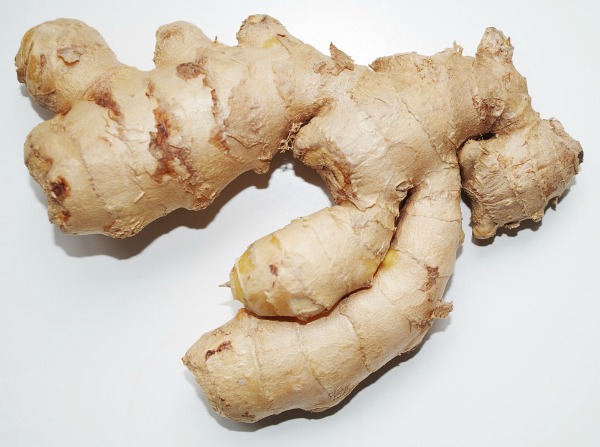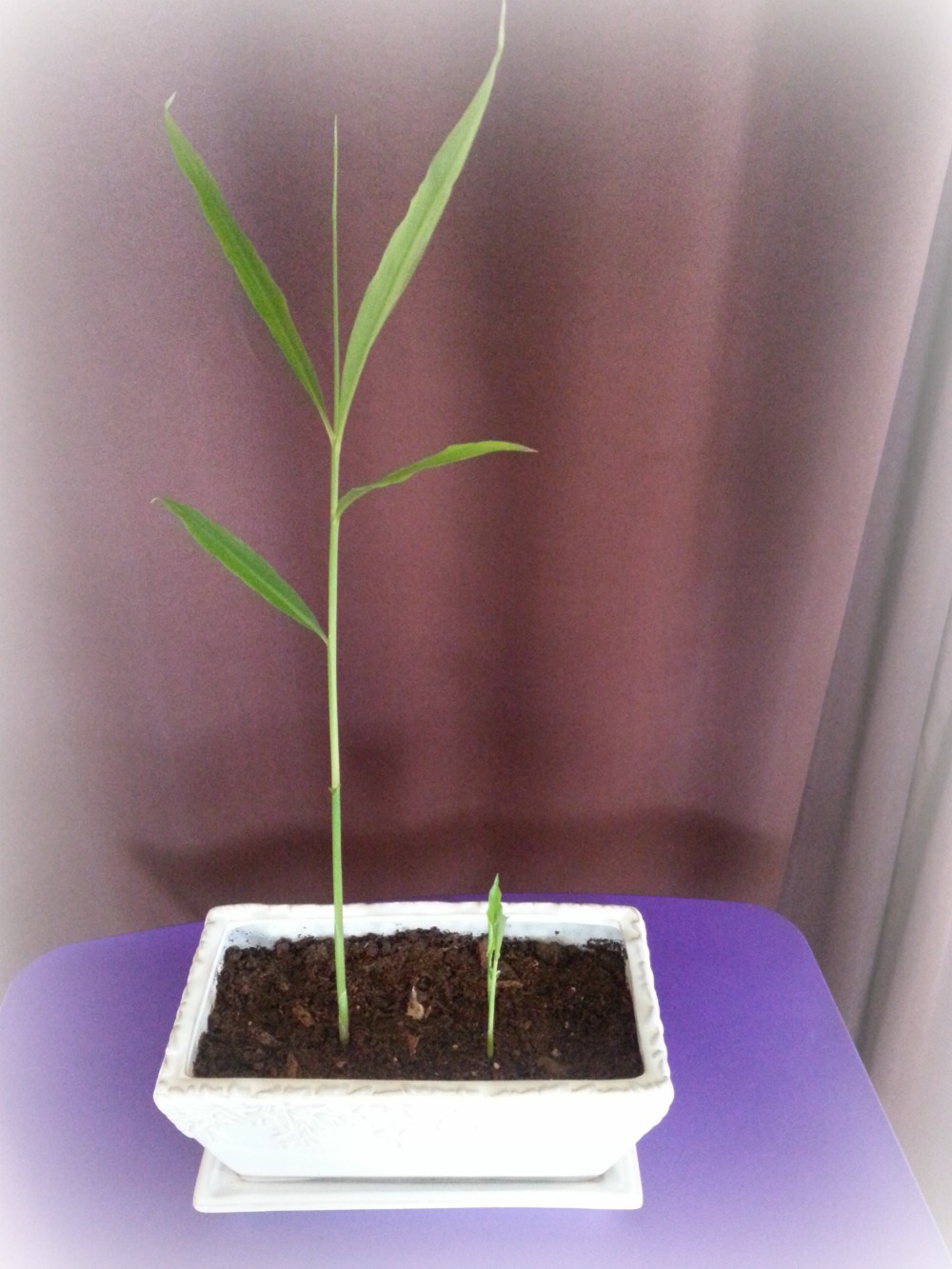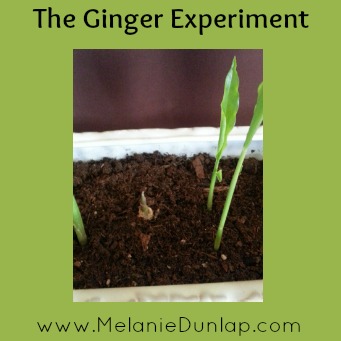I am experimenting with growing ginger root indoors. A friend sent me an article that said it was easy to grow and would do well in low light areas.
You would think that as someone living in the desert I would have abundant light indoors to grow plants. In fact the opposite is true. One of the tricks to keeping cool in the desert is to keep the house as dark as possible. It limits my plant choices.
Ginger is used in herbal remedies for gastrointestinal health, it helps to settle stomachs and alleviate gas and bloating. Ginger relieves digestive disorders in two ways. First it relaxes the muscles in the intestinal area. Then it provides digestive enzymes to help the body digest food more effectively. This helps relieve the symptoms of indigestion as well as aids the body in assimilating the nutrition from food more efficiently.
As an antispasmodic, ginger quells nausea, relieves motion sickness and helps treat morning sickness in pregnant women. It is an excellent ally for relieving painful menstrual cramps and promoting menstruation. Ginger is a circulatory tonic that energizes the heart and helps reduce bad cholesterol and lower blood pressure.

Ginger is recommended in cases of colds, flu or bronchial congestion. It is used to reduce inflammation in the body and decrease the pain of arthritis. In China, fresh ginger root is used to promote sweating and as an expectorant. A great way to counteract a wintertime illness is a cup of ginger tea with a healthy dose of honey.
The first step in my growing experiment was to find the right pot. Since ginger grows horizontally as a rhizome I needed a pot that was wide rather than deep. I used an organic potting mix that drains well and an organic piece of ginger that I purchased at the grocery store.
It is important to buy the best root possible, a plump, smooth skinned ginger root is best. Do not use one that looks skinny and shriveled. This indicates that the root has been stored too long and has become old. Only use the organic because regular ginger can be sprayed with a chemical to inhibit sprouting so that it has a longer shelf life in the store.
I chose a piece of ginger that had some bud bumps on it, soaked it overnight then broke it into a few pieces and planted each of them in the pot with the bumps facing up. I covered them with enough soil that you couldn’t see them but shallow enough that I could check on their progress. I wrote the date I planted them on the side of the pot.
And I waited.
I kept the pot moist but not too wet. I talked to it every day and because I had placed it in the treatment room where I see my clients, I excitedly told anyone that would listen about my ginger experiment.
And still I waited.

The article I had read failed to mention that ginger takes a long time to sprout. At one point I did peak under the soil to see if anything was happening.
It took 6 weeks but finally one day I walked in to find a little green shoot sticking up proudly out of the soil. I was so excited!
It seems that once my ginger got started it took off. In a month the original shoot has grown to 22” and there are 4 more sprouts showing themselves. The plant guides say that ginger can grow up to four feet tall. Culinary ginger isn’t really known for flowering so I’m not expecting any but the tall thin leaves are beautiful on their own.
If I harvest correctly I can have an endless supply of ginger. A rhizome can be dug up, a piece cut off and the remainder covered back up to continue growing. If the plant gets big and fills the pot I can dig it all up for one big harvest, saving some of the rhizomes to replant in the pot. I can’t wait to see if ginger is like other home grown foods and tastes better than store bought.
Stay tuned for updates on the ginger experiment!
Ginger Ale
Ingredients
- 1 1/2 cups sliced fresh ginger
- 1 1/2 cups water
- 1 1/2 cups sugar
- 1/2 cup fresh lemon juice
- 1 1/2 (1-liter) bottles club soda or plain seltzer, chilled
Directions
- Combine ginger (don’t bother to peel it), sugar, and water in a medium saucepan and bring to a boil, stirring to dissolve sugar. Lower heat and simmer mixture about 15 minutes, or until it reaches the consistency of pancake syrup (you should have about 1 cup syrup).
- Strain syrup and cool to room temperature. Stir in lemon juice.
- Place 2 tablespoons syrup in each of eight 8-ounce glasses and fill three quarters full with club soda. Gently stir to blend. Add ice and more club soda or syrup if necessary.
